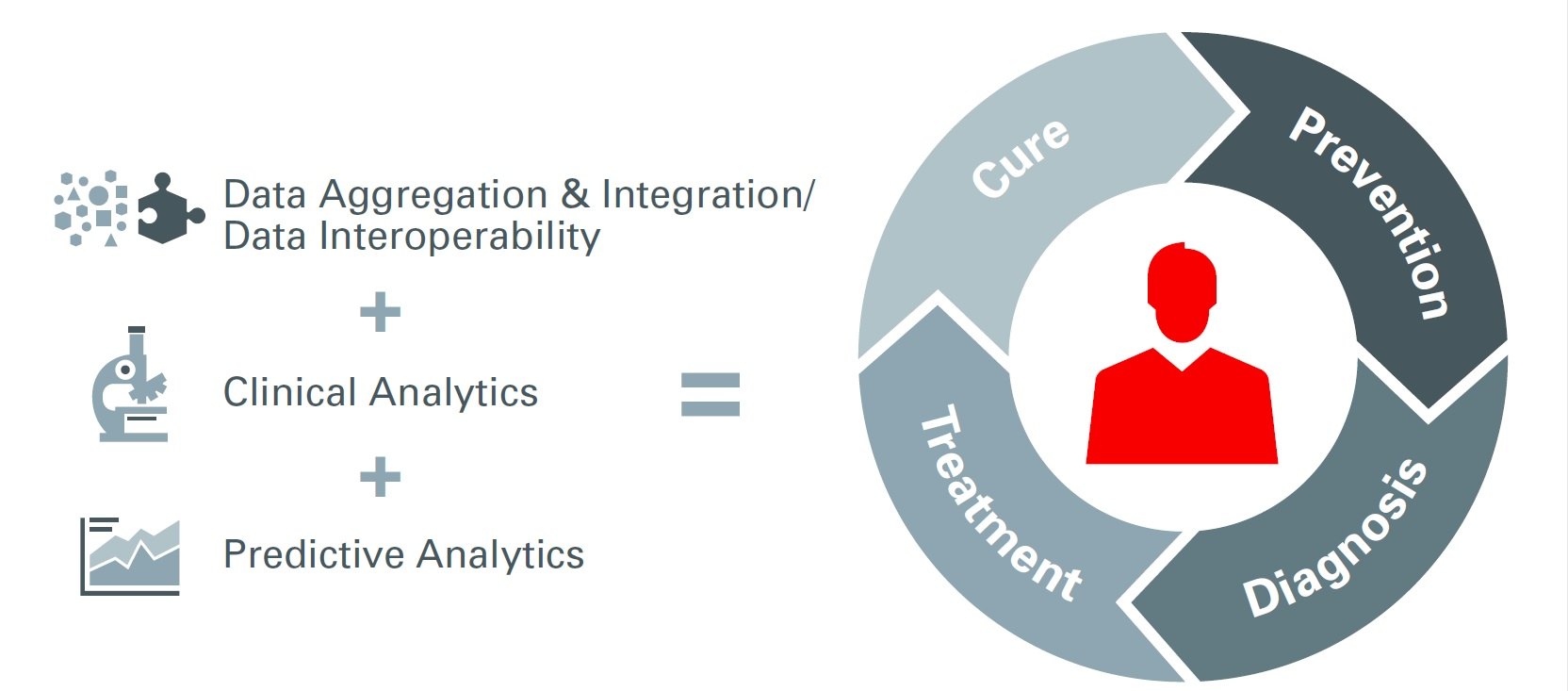
Oracle’s Jonathan Sheldon shares his perspective on precision medicine and explains how providers can prepare for the transformation that lies ahead.
The term personalized healthcare may seem like a buzzword, but it’s real and developing faster than imagined in the form of precision medicine. Using a patient’s genetic profile in conjunction with lifestyle and environmental variables to create individual treatment plans—what could be more personal than that?
Thanks to technology, we are starting to see the benefits of precision medicine in practice. In August, the New England Journal of Medicine published a study that demonstrated how genetic tests could help to identify breast cancer patients who might not need chemotherapy. The implications for revised treatment protocols and improved quality of patient life are immense, given the toll chemotherapy often takes on patients. These findings underscore the astounding potential of genomic research to change lives.
“Precision medicine isn’t new,” said Johnathan Sheldon, global vice president of Oracle Health Sciences. “The concepts, driven mainly by modern information technology, will continue to emerge from innovation to mainstream at a rapid clip over the next several years. It’s important for health systems and care providers to start strategically planning for how to incorporate these principles at scale over the next several years.”
According to Sheldon, health informatics is becoming akin to biochemistry and pharmacology in diagnostic and therapeutic medicine: as data becomes integral to medical decisions, physicians will increasingly benefit from advanced decision support with automated analysis of available data. However, for physicians to benefit, more tools will need to integrate across the various data landscapes of EMR data, lab systems, registries, images, ‘omics’ and more.
“These technologies need to enable standardization and normalization of terminologies, vocabulary, and measurements so that analytics can be carried out across all these data sources,” he said. “Additionally, they need to support scientific iterative hypothesis generation with as close to real-time answers as possible, and the analytics need to be boiled down into clinical actions that are delivered into the EMR.”
The technology isn’t quite there yet, but thanks to companies like Oracle, it’s getting there. Oracle works to aggregate data to support an analytics ecosystem, not just one path. It has supported precision medical practices for years with its unified health analytics solution OHF. It has been refined throughout the years helping well-known institutions including the Mayo Clinic.
Despite the rapid advances in the field, precision medicine is still in the early phases of unlocking the knowledge of the human genome and correlating it with relative health and disease data. Over the next few years, new types of ‘omics’ will start to cross over to the mainstream, not just sequencing; therefore, physicians and technology developers will gain a better understanding as to how genotype relates to phenotype and disease.
Three Key Ingredients to Clinically Actionable Precision Medicine
Sure, the future of precision medicine looks bright but how do providers begin to embrace what’s coming? Sheldon says there are three key action items to focus on first:
1. Assess Data Quality and Establish Governance: Inaccurate or incomplete data when automated through advanced technologies can lead to incorrect or incomplete output for clinicians, which could affect the quality of their decision-making. It’s important to assess data quality as well as establish protocols and methods to oversee the quality and use of data is both accurate and appropriate.
2. Learn More About Heath Informatics: Establishing a comfort level with data generation and utilization is fundamental to understanding how both existing and new technologies will come to support, adapt or change the existing methods of care within your organization.
3. Think Long-Term About IT
Acquiring technologies ad hoc without a plan can be time-consuming, expensive, and ultimately exasperating; planning and building a solid IT foundation appropriate for the care setting is crucial to sustaining and enabling the inevitable proliferation of new technologies in support of precision medicine.
“As part of the planning, it’s important to begin with clear, well-defined problems; to solve that, have a measurable ROI versus trying everything at once,” said Sheldon. “Start small. Don’t try to boil the ocean. And be aware that EMRs are just the first step – not the end game – in an analytics roadmap.”
On a practice level, it’s important not to get caught up in the newest, latest thing, according to Sheldon. Organizations that plan both their processes and technology for the future and build scaled, enterprise infrastructures to match, will be more successful in the long run than those who focus on isolated, fragmented innovation. “Do the hard work up front, make the appropriate investments, take the long view, and be patient in executing against that plan— success is more likely to follow,” he said.
As for healthcare industry, itself, precision medicine will rely on the creation of clinically actionable genomic standards that are interpretable by EMRs, which will ultimately allow such data to brought into clinical practice. This “common language” as Sheldon described it, is imperative to bringing precision medicine to the mainstream.
“Ultimately, the key to progressing precision medicine will be scale. These technologies and insights aren’t new anymore, but meaningful scale will rapidly increase both the volume of knowledge and access to that knowledge for as many people as possible,” said Sheldon.
As far as patient embracement goes, Sheldon stated that they are already on board and have been asking for such treatment options for years. Thus, it’s the time for providers to start following suit. So, is there a secret sauce to clinically actionable precision medicine? Perhaps, the exact recipe is still coming together, but that doesn’t mean you should wait—the pot is stirring. “The secret sauce is ultimately planning appropriately for the future,” Sheldon concluded.

